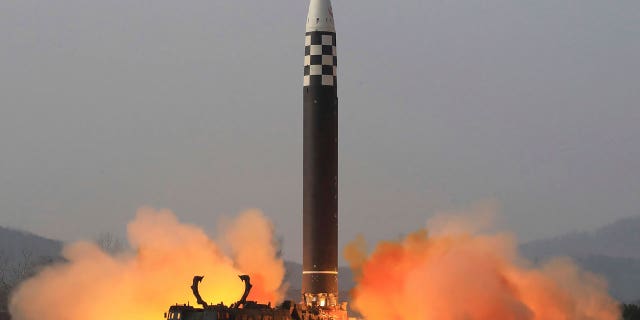NEWYou can now listen to Daily Post articles!
South Korea's military said on Sunday it had detected the trajectories of what appeared to be shots fired by North Korea, possibly from multiple rocket launchers (MLRs).
South Korea's Joint Chief of Staff announced that the shots were detected after 6 p.m. and that the military had strengthened surveillance and alert levels, without mentioning any further response.
North Korea often test-fires MLRs during military drills, and in recent years has also developed larger versions of such rockets. Smaller rockets and missiles are seen as central to North Korea's plans for striking targets in South Korea in the event of a conflict.
This year North Korea has test-fired a range of missiles, including from its largest intercontinental ballistic missile (ICBM) to its small MLRs. All are banned under U.N. Security Council resolutions that have imposed sanctions on North Korea's missile development.
N. KOREA SUGGESTS BALLOONS FLOWN FROM SOUTH BROUGHT COVID-19

South Korean President Moon Jae-in, right, speaks during a cabinet meeting at the presidential Blue House in Seoul, South Korea, Tuesday, Jan. 2, 2018. South Korea on Tuesday offered high-level talks with rival North Korea to find ways to cooperate on next month's Winter Olympics in the South.
((Kim Ju-hyoung/Yonhap via AP))
South Korea is pursuing a $2.6-billion artillery interception system, similar to Israel's "Iron Dome", designed to protect against North Korea's arsenal of long-range guns and rockets.

This photo distributed by the North Korean government shows what it says is a test-fire of a Hwasong-17 intercontinental ballistic missile (ICBM), at an undisclosed location in North Korea on March 24, 2022. Independent journalists were not given access to cover the event depicted in this image distributed by the North Korean government. The content of this image is as provided and cannot be independently verified. Korean language watermark on image as provided by source reads: "KCNA" which is the abbreviation for Korean Central News Agency.
(Korean Central News Agency/Korea News Service via AP, File))
A large part of the area surrounding Seoul, the capital, is home to about half the population of 52 million, and is within range of North Korea’s long-range guns and multiple rocket launchers.
NORTH KOREA VOWS ‘REVENGE’ ON ANNIVERSARY OF KOREAN WAR

A South Korean army's K1A2 tank moves during a military exercise in Paju, South Korea, near the border with North Korea, Wednesday, March 17, 2021.
((AP Photo/Ahn Young-joon))
The United States stations around 28,500 troops in South Korea, where they train alongside South Korean troops to counter the North. The allies have conducted missile drills of their own in response to some of North Korea's previous launches.
World


